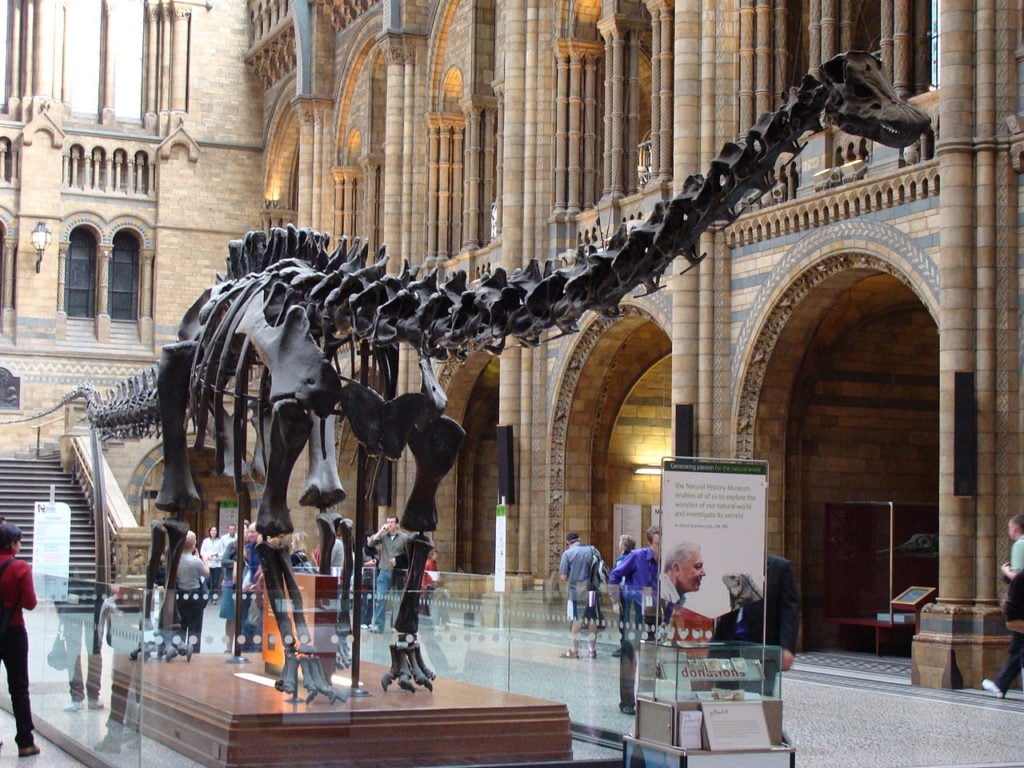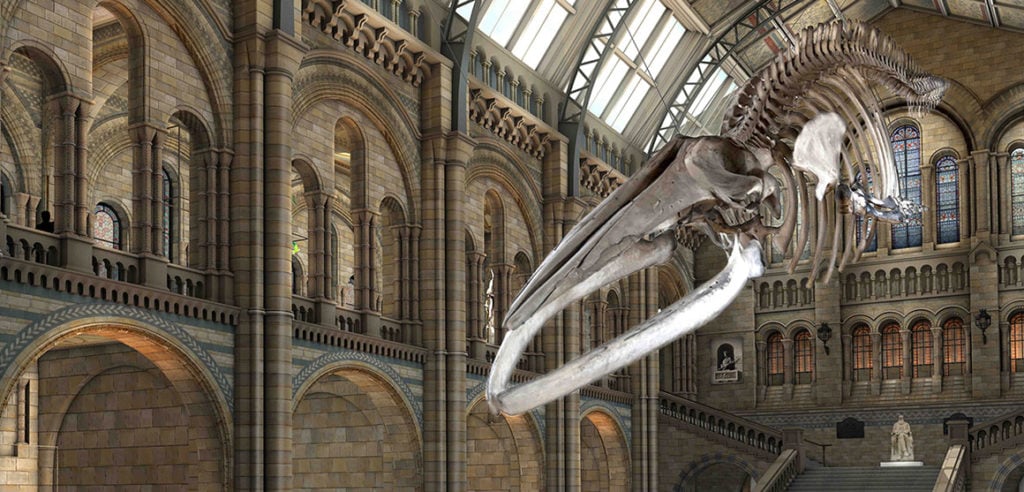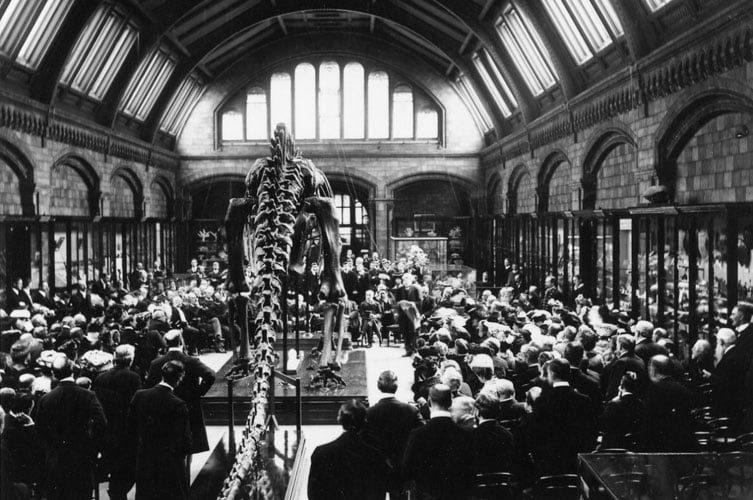Art World
Dippy the Dinosaur Leaves London’s Natural History Museum After 112 Years
The beloved diplodocus replica is embarking on a tour across the UK.

The beloved diplodocus replica is embarking on a tour across the UK.

Lorena Muñoz-Alonso

One of the best-loved museum landmarks in London, the enormous Diplodocus skeleton that graces the entrance of the Natural History Museum, made its final appearance yesterday and is now being uninstalled to embark on a tour across the UK.
Dippy, as the replica dinosaur is affectionately known, measures a whopping 21.3 meters long and 4.25 meters high, and has reigned supreme in the most visible room of the museum, the Hintze Hall, since 1979.
Its 292 bones, however, are replicas made of plaster, and not the real deal.
A 25.2-meter skeleton of a female whale that beached itself in 1891 in Ireland will be hung in the hall to replace Dippy, a decision protested by fans across the country, not happy to see their beloved dinosaur, a key figure in many childhoods, go.

Rendering of the new display, with a blue whale replacing Dippy. Courtesy Natural History Museum.
Dippy’s tour will start in February 2018, with legs in Dorset County Museum, Birmingham Museum and Art Gallery; Ulster Museum; Kelvingrove Art Gallery and Museum, Glasgow; Great North Museum, Hancock, Newcastle upon Tyne; National Assembly for Wales; Number One Riverside, Rochdale; culminating in July 2020 at Norwich Cathedral.
After the tour, Dippy will be cast in bronze and returned to the Natural History Museum as an outdoor sculpture for its gardens, AFP reports.
The history of Dippy is well documented. In 1898, American railroad workers in Wyoming found the fossilized bones of a Diplodocus, with newspapers billing it as the “most colossal animal ever to walk the Earth.”
Shortly afterwards, Andrew Carnegie, a Scottish-born millionaire businessman, heard about the discovery and decided to acquire the skeleton to display it as the centerpiece of his museum in Pittsburgh, US.
While visiting Carnegie at his Scottish castle, King Edward VII of Britain came across a sketch of the dinosaur, saying he’d like a similar specimen for the Natural History Museum in London. Carnegie then commissioned the replica (there are 9 other replicas in museums all over the world, including Paris, Berlin, Vienna, and Moscow).

Public unveiling of Dippy at London’s Natural History Museum, on May 12, 1905. Courtesy Natural History Museum.
In 1905, the skeleton arrived in London, its 292 bones carefully packed into 36 crates. It was unveiled, as a complete skeleton to the public four months later, on May 12, in a ceremony attended by 300 people.
Almost 120 years later and Dippy is getting ready to hit the road again.